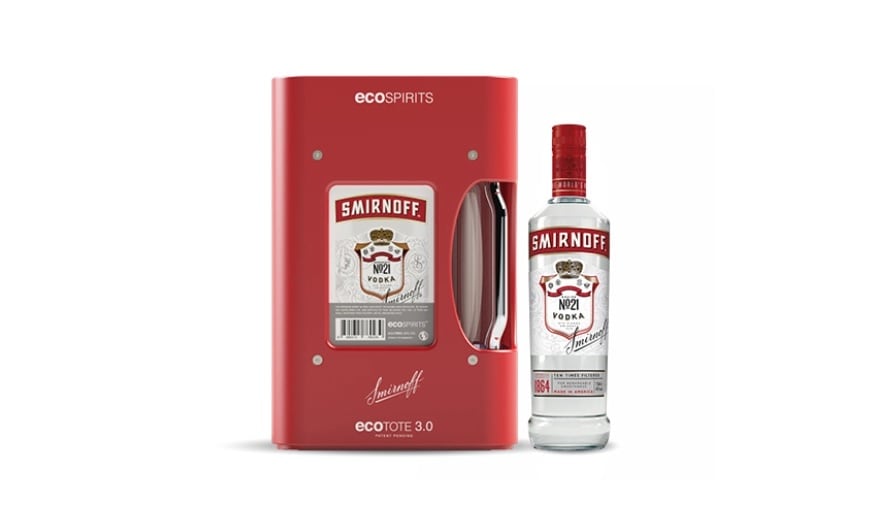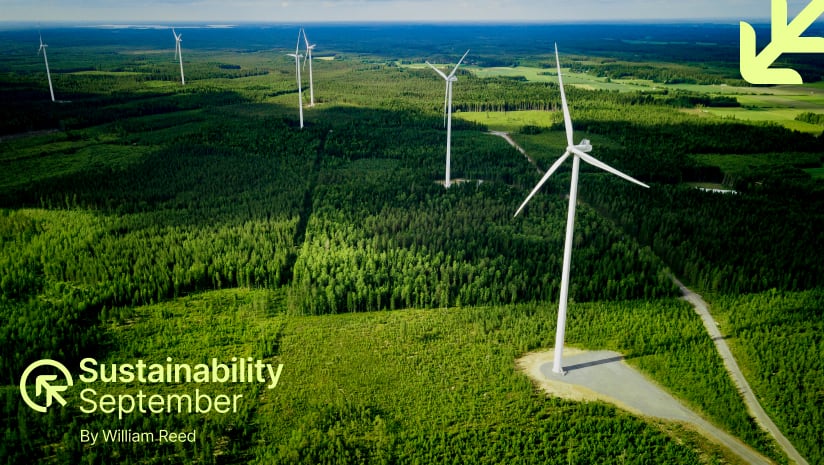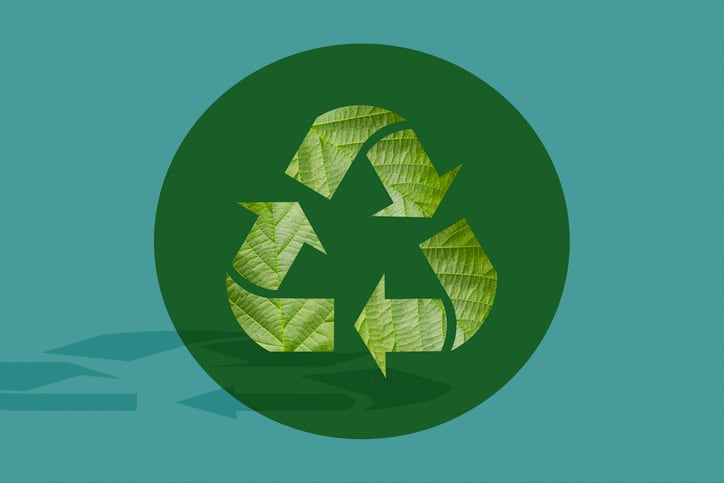The circular economy is a model which is designed to minimize waste and the use of raw materials: instead promoting reuse and recycling. Products, materials and resources are kept in use for as long as possible.
That’s in contrast to a traditional linear model: which follows a ‘take, make, dispose’ pattern.
In the beverage industry, the idea of the circular economy can have many forms. Can by-products (spent grains or husks, for example) be reused in operations as a source of energy such as biofuel? Can they be repurposed and upcycled into different products (such as coffee grounds turned into fertilizer?).
In beverage manufacturing, can waste water be reused? Are there energy efficiencies that can be implemented?
Spotlight on Circularity & Resource Management
Circularity & Resource Management is one of the top three themes at drinktec 2025 in Munich (September 15-19)
Beverage manufacturing
The concept of the circularity in the beverage industry is increasingly applied to beverage manufacturing: where it’s about the optimization of resources and energy efficiencies.
However, progress in the food and beverage industry has not been fast.
Over the 20 year period from 2000 to 2020, the food manufacturing industry only managed to achieve a 6% reduction in energy intensity, according to a study from PWC. Other industries, such as textiles and transport equipment, reported reductions of 47%.
And yet the opportunity is there. Today’s technologies – including AI and automation – give beverage manufacturers a toolkit to greatly improve efficiencies.
Unlocking savings
PWC analysed public data from one global F&B company (which remains unnamed) and found it could unlock combined energy savings and revenues of nearly $300m a year. That represents around 60% of its energy costs.
The key areas for energy reduction, in this case study, were: demand optimization, energy independence, market maximization and electrification.
And technology has transformative potential.
Each new launch in processing and packaging machinery pushes boundaries and offers further energy efficiencies or resource conservation. Automation and AI again are tools that can ensure optimization at all stages of the production process.
The possibilities stretch across the production process: and small changes can make big differences.
“For example, some companies are using blow-fill technology to eliminate the need to transport and wash pre-made bottles,” explained Rebecca Marquez, Director, PMMI Media Group Custom Research.
“Blowing PET bottles onsite and filling them immediately reduces water and energy consumption while having the added bonus of streamlining logistics. In an effort to reduce refrigeration energy demand, some companies are also adopting ambient-fill innovations in soda production, which allows for warm-temperature filling.”
For beverage manufacturers, the main concern is to keep hygiene front and center of operations.
“Hygiene and costs pose some of the biggest challenges to the beverage industry,” explained Marquez.
“Some brands rely on multi-layer and PET bottles to keep consumable products sterile or to withstand processes (e.g., pasteurization), but these materials are difficult to recycle in our current infrastructure. Other challenges include technical complexity, where brands are unable to successfully synchronize machines from different suppliers, which can be a driver for major inefficiencies.
“But there are significant opportunities for OEMs [original equipment manufacturers] and materials suppliers to develop integrated solutions, such as labeling, and modular packaging lines to support quicker and easier adoption of circular materials, and innovations in sustainable formats, such as bio-based polymers and paper-based alternatives to reduce the use of “difficult to recycle” plastics."
A circular economy for beverage packaging
The concept of the circular economy is a hot topic in packaging. Single-use plastic bottles and single-use coffee cups in the beverage industry have gathered particular attention.
Applying the circular economy to packaging, therefore, is a priority.
For many companies, the idea of a closed loop circular economy involves recycling packaging to recreate new materials and products. Beverage companies have, for example, made leaps and bounds in upping rPET content in bottles.
But not so fast. This strategy still involves adding in virgin materials or inputting energy for recycling - and that’s not ideal.
“The circular economy is a model which involves sharing, leasing, reusing, repairing, refurbishing and only after that recycling existing materials and products as long as possible,” says Paul Foulkes-Arellano, an expert on the circular economy and founder of Circuthon Consulting.
“In the context of the beverage industry, this very much centers on reuse systems,” he said.
“In Germany, for example, 82% of beer is sold in refillable bottles and 99% of those are returned for refilling. The beer industry also uses refillable kegs: draught beer is circular, and low emission compared to packaged beers.”
Outside of beer, other refill models are growing. EcoSpirits offers a refillable solution for bars and hospitality settings. Refillable aluminum bottles give consumers an alternative to plastic bottles.

Driving circularity
The harsh reality is that there is less cost, and less tied-up inventory, in single-use packaging. And consumers – much though they pledge to care about the environment - don’t always vote with their feet.
“Consumers aren’t demanding circularity: they love convenience,” says Foulkes-Arellano. “In order to make circularity work, it needs to look at feel like a normal convenience purchase.”
The use of growlers in the US appears to be in decline: because cans offer a much more convenience and clean alternative to cleaning and refilling growlers. That makes life easier for both consumers and taprooms: where hygiene and sterile environments have to be top of mind.
But legislation could push change and drive a circular economy. The European Union adopted the Circular Economy Action Plan in 2020: one of the main building blocks of the European Green Deal, Europe’s agenda for sustainable growth. The EU’s Packaging and Packaging Waste Directive adds pressure too.
“Real change requires a systemic change and a holistic set of measures,” said Larissa Copello, packaging and reuse policy officer at Zero Waste Europe.
“First of all, we need strong EU, national, and local policies to set the drivers to move away from single-use packaging and support more prevention and reuse. The EU packaging legislation has given EU governments and public authorities the power to establish further measures to support this transition.
“Policy can also drive investment to reuse and refill systems for packaging, which lack of a level playing field with cheap and accessible single-use packaging.

“When it comes to economic incentives, Extended Producer Responsibility (EPR) Schemes have the potential to shift the costs from citizens and municipalities to producers, who must take full responsibility for the life cycle of packaging.
“These costs should be further invested in reuse infrastructure, including the development of deposit return schemes (DRS), which have proven to achieve high collection rates and ensure that packaging is returned for reuse and closed-loop recycling at the end of its life.”
Pressure from investors and legislation
The impact of legislation? Manufacturers have to sit up and take note.
“Many businesses have added environmental factors to their risk register,” said Foulkes-Arellano. “It has been calculated that early action to mitigate environmental threats such as adopting a circular business model can reduce future expenditure as a percentage of turnover by double digits.
“Businesses who assume that ‘Business As Usual’ will be the safest path to profit are being surprised by the speed at which environmental legislation affects their bottom line, and indeed their ability to continue in business.
“And financial institutions who once sat on the fence are now encouraging their clients to ‘go circular’.”
Zero waste is a collective responsibility, but leadership must come from decision-makers and companies
Larissa Copello, Zero Waste Europe.
“The burden cannot be placed on consumers,” agrees Larissa Copello of Zero Waste Europe.
“Legislators and companies hold the most power to redesign systems and make sustainable options the default. Policy-makers must set clear rules and targets, while companies must invest in better and safer products and systems. Consumers will benefit from these systemic changes through easier access to reuse, lower costs in the long run, and cleaner environments.”
And while most of the legislation is currently coming from Europe, we live in a global world: and this will influence the US.
“To some extent, we should also view global regulations as reshaping the US market,” said Marquez of US-headquartered PMMI.
“Canada’s 2024 mandate for paperboard six-pack carriers and Europe’s tethered-cap requirements suggest where US policies are headed. In addition, anticipated extended producer responsibility (EPR) laws are likely to accelerate investments in recyclable and compostable packaging.”
We want to hear what you think! Take our short, anonymous sustainability survey - and we'll make a donation to Farm Africa
Is the food and drink industry doing enough when it comes to sustainability? Where are the causes for celebration - and what are the challenges and concerns?
We want to know what you think! This short, anonymous poll will take just a couple of minutes to complete: yet your thoughts will help us take a global pulse check of what matters most as we look to shape a more sustainable future for the F&B industry.
And for every survey completed, we'll make a donation to Farm Africa: a charity that reduces poverty in eastern Africa by helping farmers grow more, sell more and protect the environment for years to come (up to a maximum amount).

